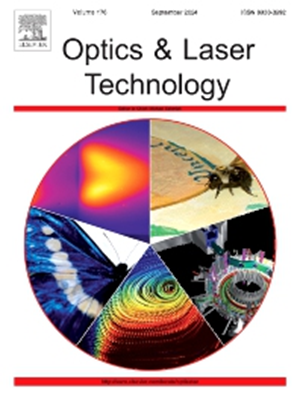在倒易空间中一般位置上的强倾斜狄拉克点的直接观测
IF 5
2区 物理与天体物理
Q1 OPTICS
引用次数: 0
摘要
ii型狄拉克点(DPs)出现在强倾斜和接触能带的交汇处,表现出许多有趣的物理现象,与非倾斜的i型狄拉克点有根本不同。在过去的十年里,他们的发现刺激了对电子系统和其他布洛赫波系统的广泛研究,如光子和声子晶体。然而,目前的研究主要集中在镜像对称条件下沿第一布里渊区(FBZ)高对称方向的ii型DPs,这是高度限制性的,限制了进一步的研究和应用。为了克服严格的约束,我们在这里确定并证明了ii型DPs在FBZ内的一般位置出现,而不需要镜像对称。ii型DPs是偶然简并,在具有h形金属图案的晶板上实验实现。我们的研究结果表明,即使在没有镜像对称的情况下,ii型dp也可以通过简单地旋转h形图案和调整几何和物理参数在FBZ内的指定位置出现。在此基础上,实现了离轴圆锥衍射,并进行了实验观察。同时,我们发现,在旋转过程中,ii型DPs转变为离轴的i型DPs,但仍然强烈倾斜,导致负折射的出现。因此,我们提出的不受高对称性限制的诱导ii型或强倾斜i型DPs的通用方法为相关研究开辟了潜在的途径。例如,观察到的离轴圆锥衍射和负折射可以激发光子学和其他布洛赫波系统的未来发展和应用。本文章由计算机程序翻译,如有差异,请以英文原文为准。
Direct observation of strongly tilted Dirac points at general positions in the reciprocal space
Type-II Dirac points (DPs), which occur at the intersection of strongly tilted and touching energy bands, exhibit many intriguing physical phenomena fundamentally different from the non-tilted type-I counterparts. Over the past decade, their discovery has spurred extensive research into electronic systems and other Bloch-wave systems, such as photonic and phononic crystals. However, current studies typically focus on type-II DPs along high-symmetry directions in the first Brillouin zone (FBZ) under mirror symmetry conditions, which are highly restrictive and limit further investigations and applications. To overcome the stringent constraint, here we identify and demonstrate the emergence of type-II DPs at general positions inside the FBZ without requiring the mirror symmetry. The type-II DPs, being accidental degeneracies, are experimentally realized on a metacrystal slab with H-shaped metallic patterns. Our findings indicate that even in the absence of mirror symmetry, type-II DPs can emerge at designated locations inside the FBZ by simply rotating the H-shaped patterns and adjusting geometrical and physical parameters. Furthermore, based on the rotated type-II DPs, off-axis conical diffractions have been realized and experimentally observed. Meanwhile, we discovered that during the rotation process, the type-II DPs transform into off-axis type-I DPs, but still strongly tilted, resulting in the emergence of negative refractions. Hence, the generic method we propose for inducing type-II or strongly tilted type-I DPs without the high-symmetry limitations opens potential avenues for related research. For example, the observed off-axis conical diffraction and negative refraction could inspire future development and applications in photonics and other Bloch-wave systems.
求助全文
通过发布文献求助,成功后即可免费获取论文全文。
去求助
来源期刊
CiteScore
8.50
自引率
10.00%
发文量
1060
审稿时长
3.4 months
期刊介绍:
Optics & Laser Technology aims to provide a vehicle for the publication of a broad range of high quality research and review papers in those fields of scientific and engineering research appertaining to the development and application of the technology of optics and lasers. Papers describing original work in these areas are submitted to rigorous refereeing prior to acceptance for publication.
The scope of Optics & Laser Technology encompasses, but is not restricted to, the following areas:
•development in all types of lasers
•developments in optoelectronic devices and photonics
•developments in new photonics and optical concepts
•developments in conventional optics, optical instruments and components
•techniques of optical metrology, including interferometry and optical fibre sensors
•LIDAR and other non-contact optical measurement techniques, including optical methods in heat and fluid flow
•applications of lasers to materials processing, optical NDT display (including holography) and optical communication
•research and development in the field of laser safety including studies of hazards resulting from the applications of lasers (laser safety, hazards of laser fume)
•developments in optical computing and optical information processing
•developments in new optical materials
•developments in new optical characterization methods and techniques
•developments in quantum optics
•developments in light assisted micro and nanofabrication methods and techniques
•developments in nanophotonics and biophotonics
•developments in imaging processing and systems

 求助内容:
求助内容: 应助结果提醒方式:
应助结果提醒方式:


